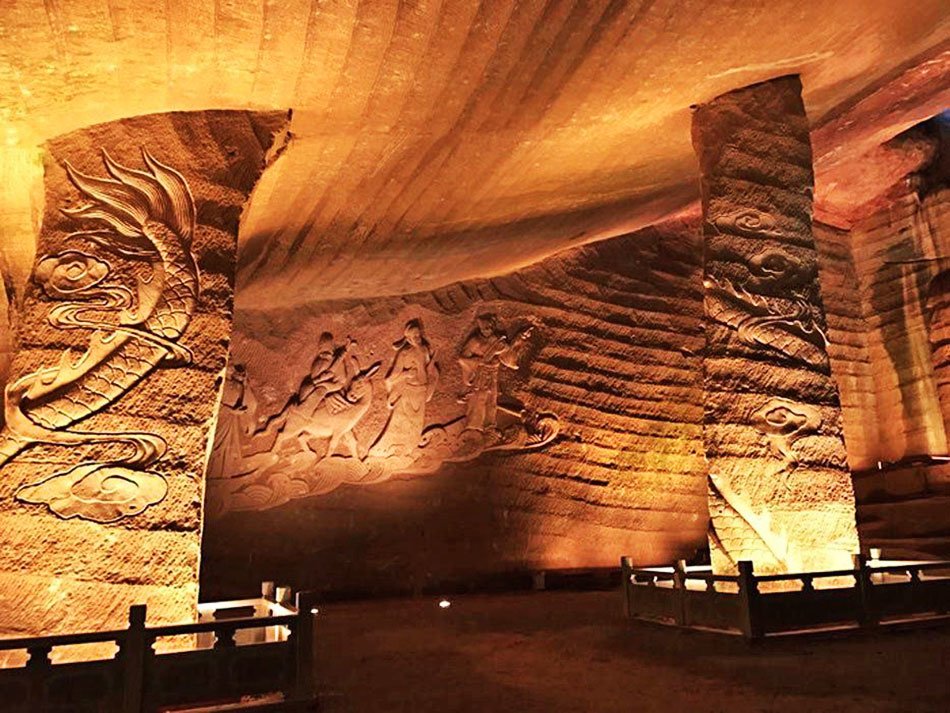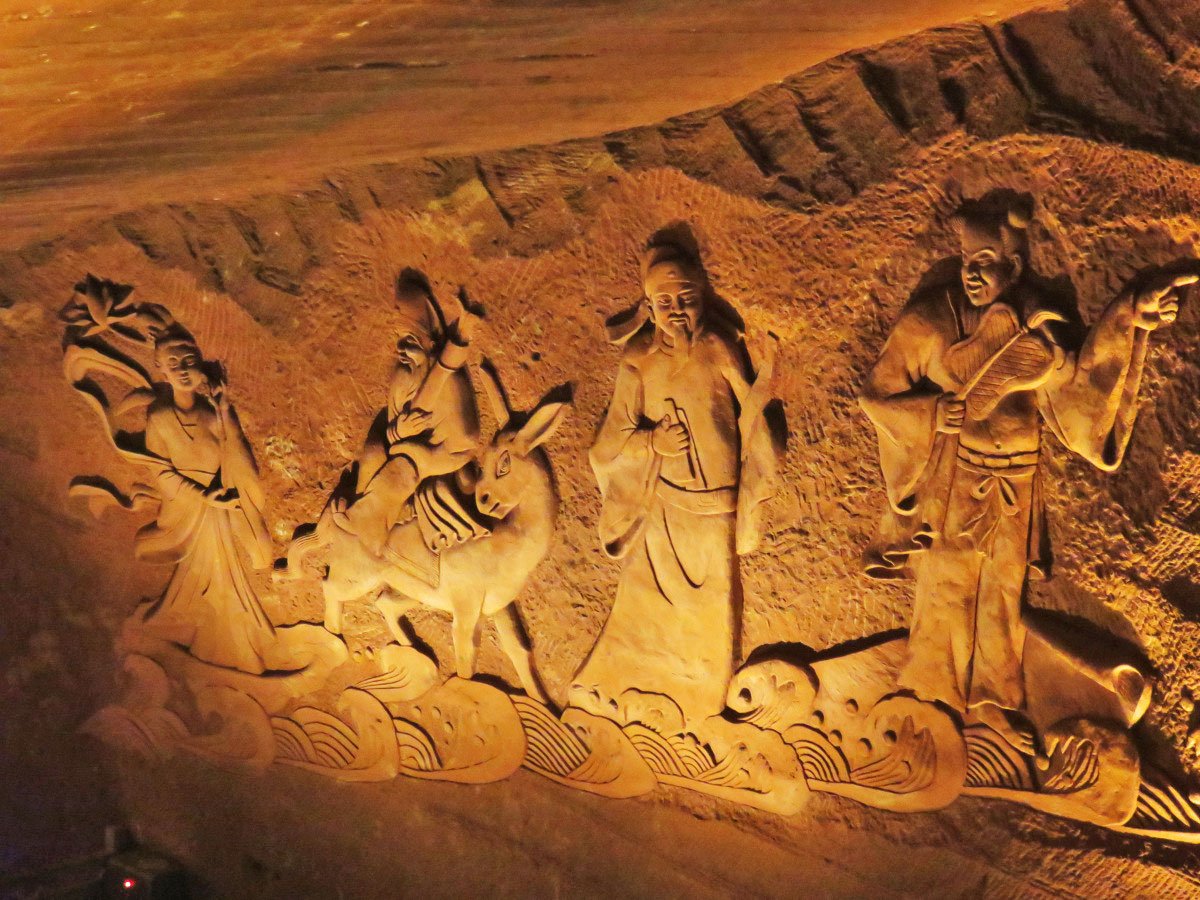Longyou Caves
Table of Contents

The Longyou Caves, also known as the Xiaonanhai Stone Chambers, are a group of 24 artificial sandstone caverns located at Fenghuang Hill, near the village of Shiyan Beicun on the Qu River in Longyou County, Quzhou prefecture, Zhejiang province, China.
Created more than 2,000 years ago, they were not recorded in any historical documents and were rediscovered by farmers in 1992.

In June 1992, four farmers in Longyou discovered the caves by accident when they drained the water of five small ponds in their village. The ponds turned out to be five large manmade caverns. Further investigation revealed 19 more caverns nearby.
Although they have been determined to be more than 2000 years old, their construction is not recorded in any historical documents. It is therefore impossible to establish their actual origin.
Their discovery was made by investigating a myth of the local folklore since age-old local traditions often referred to the fact that the small ponds on Phoenix Hill were bottomless.
As it’s often the case, myths and oral traditions turned out to have a real background story.
To test this rumor, in 1992 the local communities gathered under the guidance of a curious fellow citizen named Wu Anai and made the decision to drain the “bottomless” ponds by installing hydraulic pumps.
After 17 days of water removal, the entrances to one of the most curious stone complexes on the planet were uncovered.

The caves are very large considering their artificial origin: the average area of each cave is over 1,000 square meters (11,000 square feet), with heights of up to 30 meters (98 feet) and the total area covered is 30,000 square meters (320,000 square feet).
Scientists estimated that one million cubic meters of rock had to be excavated to build the cave, which required advanced working organization and therefore an organized society.
However, the tools used are unknown, as no trace of them has been found. Furthermore, there are no documents that attest to the construction of the caves.
The surfaces of the ceiling, walls, and pillars are all finished in the same way, with a series of bands or parallel courses about 60 cm wide containing parallel chipping marks placed at an angle of about 60 ° to the axis of the course.
In each cave, there are columns supporting the ceiling.
They have maintained their structural integrity and each cave is a unique structure not connected to the others.
Theories And Interpretations
Archaeologists have advanced hypotheses about their use but none of them have been proven.
If they had been tombs, burial remains would have been found but this was not the case.
If they had been underground buildings, they would have been divided into different rooms and also no traces of everyday objects have been found.
If they were mines for the extraction of minerals there would be no need for decorations and complex drawings.

Another theory holds that it was a place where the army could hide but, even in this case, there is no evidence that anyone ever lived there.
Dr. Chu Liangcai of Zhejiang University speculated that the Longyou Caves were excavated when Emperor Xuan of the Western Han Dynasty built warehouses in the border counties, thus arguing that their function was to store food, goods, and weapons for war.
However, the caves were easily filled with water in case of rain, and in ancient times, when there were no pumps, it would have been difficult to store food in moisture or weapons with wooden parts.
The rooms also have incredible acoustic properties, which is the reason why, in addition to regular excursions, various cultural events take place here, music concerts in particular.

